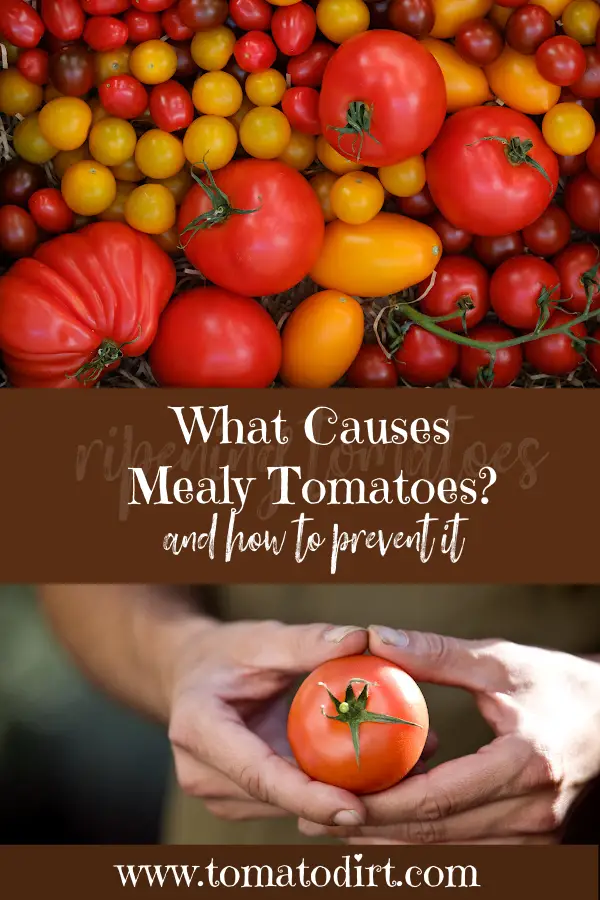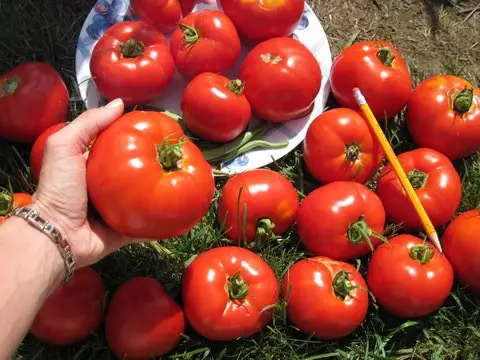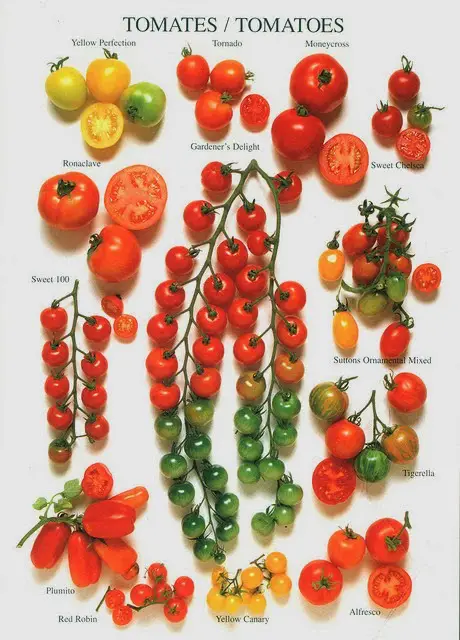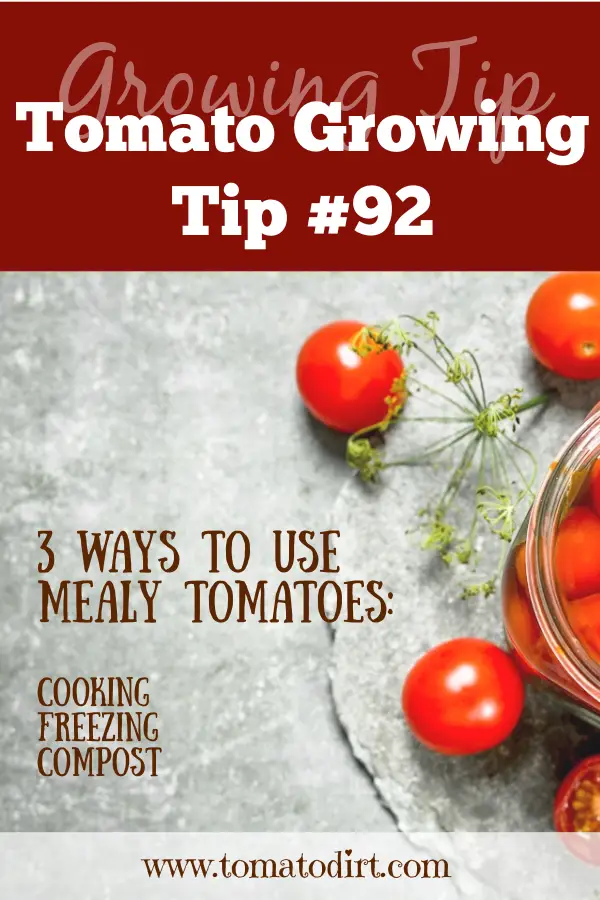FREE: 10 Must-Know Tomato Growing Tips Get The Guide
Read our affiliate disclosure here.
What Causes Mealy Tomatoes and What To Do About It
Since 2010, Tomato Dirt has garnered 4.8+ million views, making it the web’s leading online source for growing tomatoes in the home garden. Award-winning writer and Tomato Dirt owner Kathy Widenhouse has helped thousands of home gardeners grow healthier tomatoes. Be one of them when you get Tomato Dirt’s Growing Guide here.
Posted 6.22.25
You’ve picked a ripe tomato … only to bite into it and be flooded with disappointment. What causes mealy tomatoes? It doesn’t seem fair that luscious summer fruit lose their juicy, firm texture and become dry and grainy.
But there’s good news for tomato growers and gardening enthusiasts. You can understand what causes mealy tomatoes and prevent a discouraging, gritty outcome. Here’s the dirt.
What does a mealy tomato look like?
A mealy tomato has distinct visual and textural characteristics that are so different from the fresh, firm tomato you expect. When you recognize these signs, you can identify mealy tomatoes before cutting into them – and decide how best to use them (or avoid them altogether).
Here’s what to look for.
- Firmness. Mealy tomatoes are softer to the touch than healthy tomatoes. When you press on the skin, it may not bounce back as quickly as a fresh tomato. Fruit may sag in places or have wrinkles.
- Texture. When you cut or bite into a mealy tomato, the flesh feels dry and grainy rather than smooth and juicy. You may describe the texture as crumbly or mushy.
- Appearance. A mealy tomato’s interior looks less vibrant than a healthy tomato. It’s got a slightly dull, muted color compared to the bright, rich red of a fresh tomato. The flesh may appear uneven and lack of uniformity throughout the internal structure.
- Juiciness. Mealy tomatoes have less juice than healthy tomatoes. When you slice into them, you might notice that there’s less liquid oozing out compared to a fresh, firm tomato.
- Seeds. The seed pockets inside a mealy tomato are less defined than those in a healthy tomato. Plus, the seeds themselves might be surrounded by a more solid, grainy mass rather than the usual gel-like substance.
What causes mealy tomatoes?
Tomatoes go mealy thanks to a combination of factors.
Over-ripeness
Tomatoes that are left on the vine for too long or stored past their prime can become mealy. Here’s why. The fruit depends two factors in order to ripen.
- Temperature. 68-77 degrees F is optimum.
- Hormones. Specifically, a naturally occurring hormone called ethylene, which converts carotenoids into red lycopene pigments – and slows activity above 85 degrees F.
So when temperatures are consistently hot, then tomatoes don’t change color. Then, you get tricked into thinking fruit is not ripening. The result? The cell walls inside the tomato break down. The fruit loses moisture and firmness.
Improper storage
Tomatoes go mealy when they are stored improperly, such as in the refrigerator (which can alter their texture), or when they are exposed to extreme temperatures. Like when you have a heat wave for a week or more. Or you’ve had unseasonably cool or wet weather for days on end.
Variety
Some tomato varieties are more prone to becoming mealy than others, particularly those with thin skins or less dense flesh.
How to prevent tomatoes from becoming mealy
To prevent tomatoes from becoming mealy, try these tips.
- Harvest at the right time. Pick tomatoes when they are fully ripe but still firm. Avoid leaving them on the vine for too long.
- Store tomatoes properly. Keep them at room temperature, away from direct sunlight. Do not refrigerate unless they are fully ripe and you plan to use them soon.
- Handle with care. Tomatoes can bruise easily. That accelerates their ripening process and along with that, they have a greater potential for becoming mealy. Handle them gently during harvesting and storage.
- Choose resilient tomato varieties. If you frequently find that tomatoes turn mealy on your watch, then opt for varieties known for thicker skins, firm flesh, and a good shelf life.
Can you eat mealy tomatoes?
Yes. Mealies are safe to eat, even though their texture may not be appealing. But you needn’t toss them. Use mealy tomatoes in cooked dishes where texture is less critical, such as sauces, soups, or stews. Or freeze them to use in cooked dishes during the off season.
What's the difference between mealy tomatoes and mushy tomatoes?
Both mealy and mushy tomatoes are signs that the fruit is past its prime, but the key difference is in their texture and moisture content.
Mealy tomatoes
- Mealy tomatoes have a dry, grainy texture when you bite into them.
- The flesh feels crumbly and lacks juiciness.
- The internal structure is less cohesive and may seem somewhat coarse.
- The interior may look uneven and less vibrant in color.
- The flesh appears dry, and there is less liquid.
- Mealy tomatoes are often soft to the touch but not necessarily overly squishy.
- Mealiness is often due to over-ripening, improper storage, or genetic factors.
- Over-ripeness leads to the breakdown of cell walls, causing loss of moisture and firmness.
Mushy tomatoes
- Mushy tomatoes are excessively soft and almost squishy.
- The flesh feels waterlogged and overly soft when you bite into them.
- The exterior may appear wrinkled or even have some spots of rot.
- The interior is excessively moist, and the flesh may seem almost liquid-like in places.
- Mushy tomatoes are extremely soft and collapse easily under pressure.
- Mushiness is often due to over-ripening, excessive water content, or spoilage.
- Exposure to very high or low temperatures can also lead to mushiness.
Bottom line: mealy tomatoes have a grainy texture, less juice and crumbly flesh caused by over-ripening, improper storage, or genetic factors. Mushy tomatoes are excessively soft, with a waterlogged texture and overly moist flesh which is the result of over-ripening, high water content, or spoilage.
Which kinds of tomatoes are most apt to become mealy?
Certain tomato varieties are indeed more prone to becoming mealy due to their genetic makeup. Varieties with thicker skins and denser flesh tend to hold up better against mealy texture. Here are some varieties that are more prone to developing a mealy texture:
- Beefsteak tomatoes. These large, juicy tomatoes are popular for their size and flavor, but they can become mealy if overripe or improperly stored.
- Early Girl tomato. Known for its early harvest, the Early Girl variety can sometimes develop a mealy texture, especially when exposed to fluctuating temperatures and inconsistent conditions that can plague the early growing season.
- Celebrity tomato. This popular hybrid tomato variety is valued for its disease resistance and reliable yield but can become mealy if not harvested at the right time.
- Roma (plum) tomatoes. While Roma tomatoes are often used for sauces and canning due to their dense flesh, they can become mealy if they get too ripe or if they are stored improperly.
- Cherry tomatoes. Smaller varieties like cherry tomatoes can become mealy, given that they have less mass to begin with – particularly if left on the vine too long or exposed to extreme temperatures.
To reduce the likelihood of mealy tomatoes, consider planting varieties known for their firmer texture and better storage qualities, such as …
- Campari. Known for their sweetness and firmness, Campari tomatoes are less likely to become mealy.
- Grape tomatoes. These small, firm tomatoes are often less prone to mealiness and hold up well in storage.
- San Marzano tomatoes. This heirloom variety is prized for its dense flesh and resistance to becoming mealy, making it ideal for sauces and canning.
By selecting tomato varieties that are less prone to mealiness and following best practices for harvesting and storage, you can enjoy firmer, juicier tomatoes throughout the growing season.
Why do tomatoes get mealy in the fridge?
Refrigeration temperatures (below 55°F or 13°C) cause the cell walls of tomatoes to break down. Moisture in the fruit moves into the areas in between the cells. This causes tomatoes to release water and poof! The fruit is drier with a grainier texture. And while refrigerators are designed to maintain consistent humidity, the cooler environment dries the tomato's outer layers along with the interior parts of the fruit. Now, you’ve got a one-two dehydration punch.
Plus, cold temperatures interfere starches as they convert to sugars. That changes the natural ripening process in tomatoes, contributing to uneven textures that are so typical of mealiness.
What to do with mealy tomatoes
If you end up with mealy tomatoes, you can still use them. Consider these options.
- Cooking. Use mealy tomatoes in recipes that involve cooking, blending, or pureeing, where texture is less noticeable. Think spaghetti sauce … chili … casseroles.
- Freezing. Mealy tomatoes can be frozen for later use in sauces or soups. Freezing alters texture further, but it preserves flavor.
- Composting. If the tomatoes are severely mealy and unusable, compost them to enrich your garden soil.
Top tip: avoid what causes mealy tomatoes in the first place
You cannot control Mother Nature. But you can keep an eye on the thermometer. If you experience multiple days of extended heat … or it’s midsummer and tomatoes don’t seem to ripen promptly … you test fruit and it starts to feel soft … well, it’s time to investigate further. Pick a few of those fruit to check for over-ripeness.
Do that and you can save a large number of tomatoes from becoming mealy. You can let them turn red on your kitchen counter and enjoy luscious juicy fruit rather than dry, mealy tomatoes that crumble in your mouth.
More Tomato Problems on Fruit
Blossom end rot: how to identify, control, and prevent it ...
6 Kinds of Tomato Plant Leaf Curl and How to Treat Them ...
Why a tomato cracks and what to do about it ...
Tomato sunscald: why too much sun can be hazardous to tomatoes...
Why is there a hard core in tomato centers?
Gray wall on tomatoes: blotchy ripening on fruit ...
Tomato fruitworms: how to identify and control them ...
More tips for managing tomato problems on our Pinterest board ...
Return from What Causes Mealy Tomatoes? to Tomato Dirt home
As an Amazon Associate and Rakuten Advertising affiliate I earn from qualifying purchases.
SHARE THIS PAGE:
FREE! 10 Must-Know Tomato Growing Tips: 20-page guide
Get yours here:







